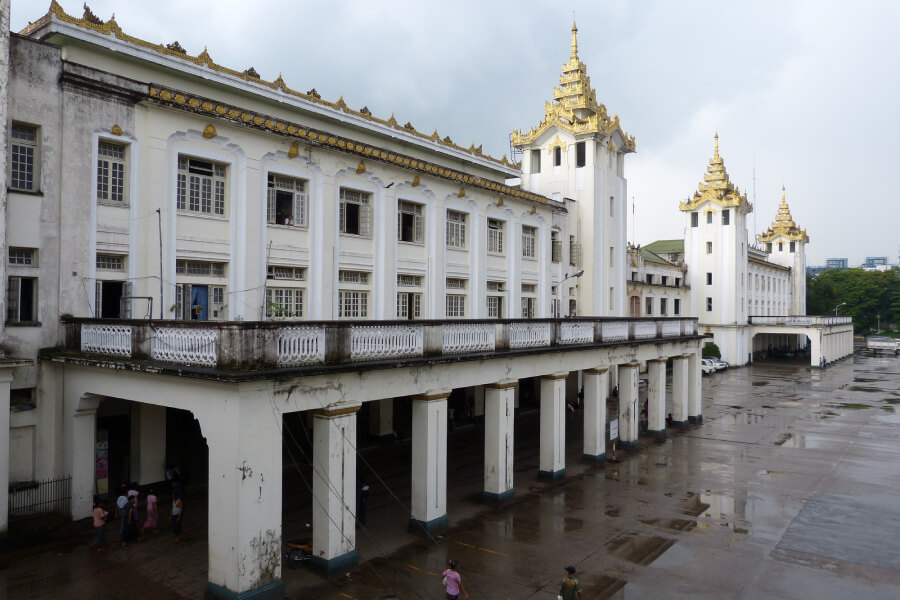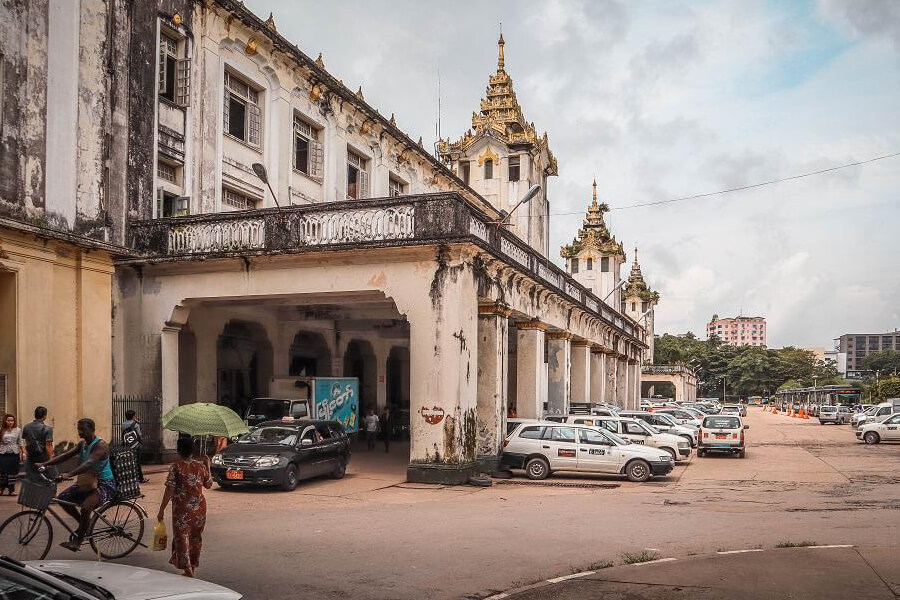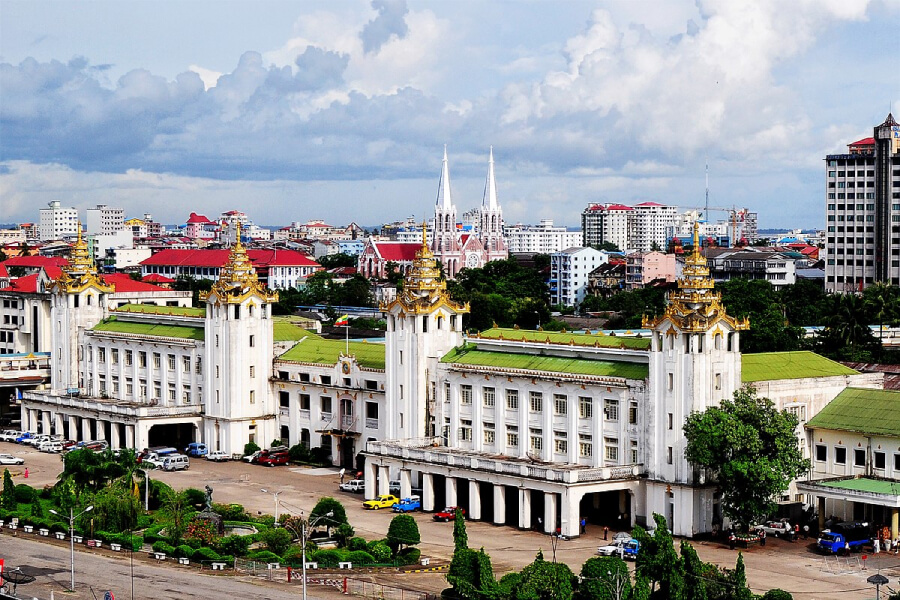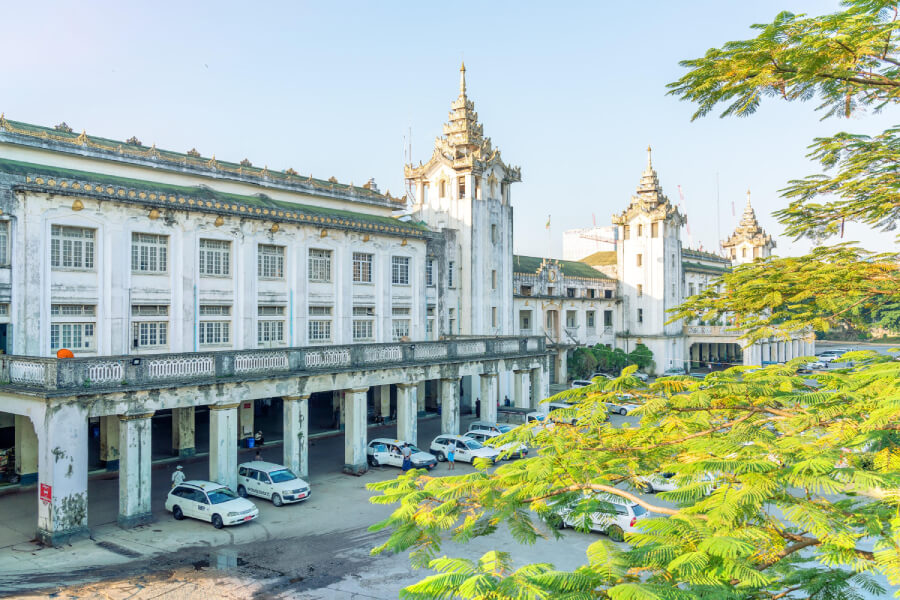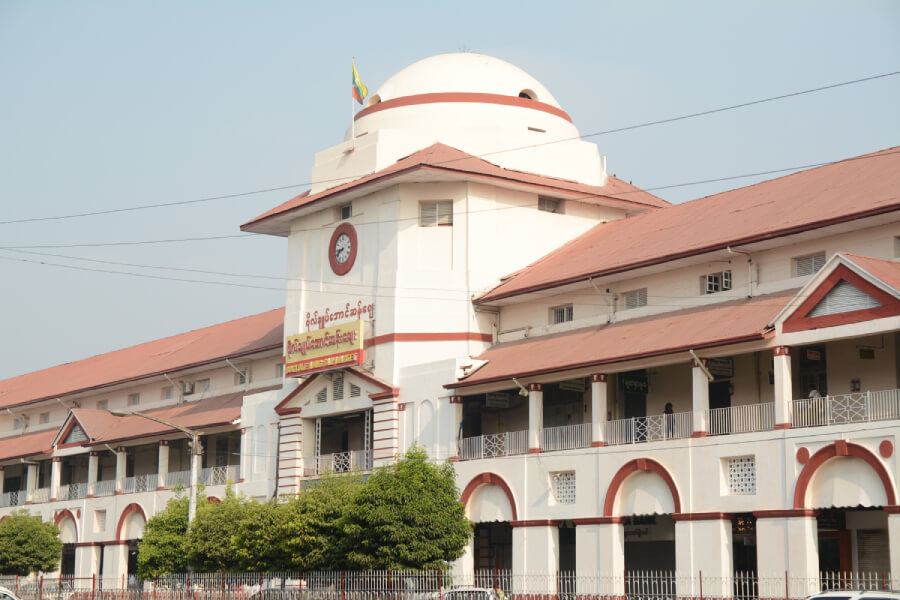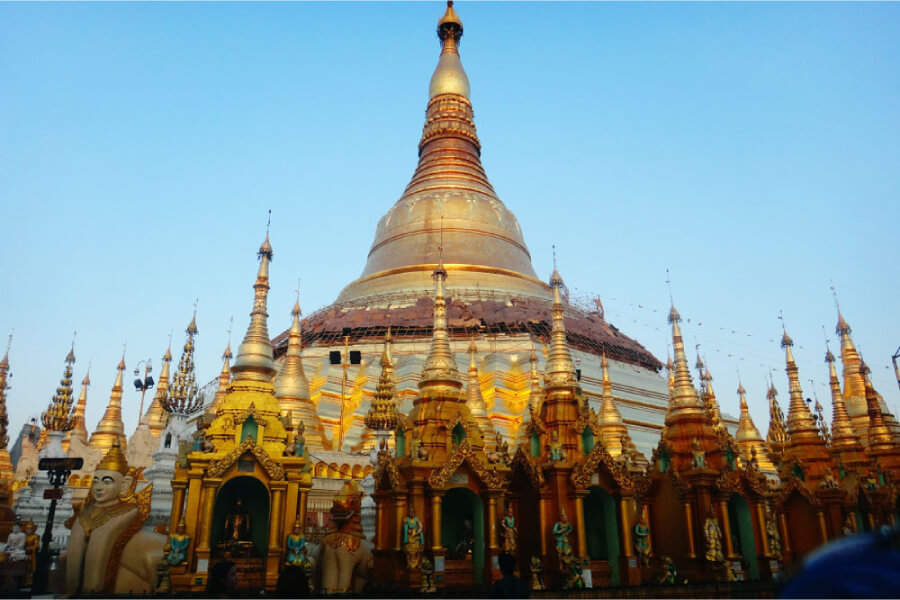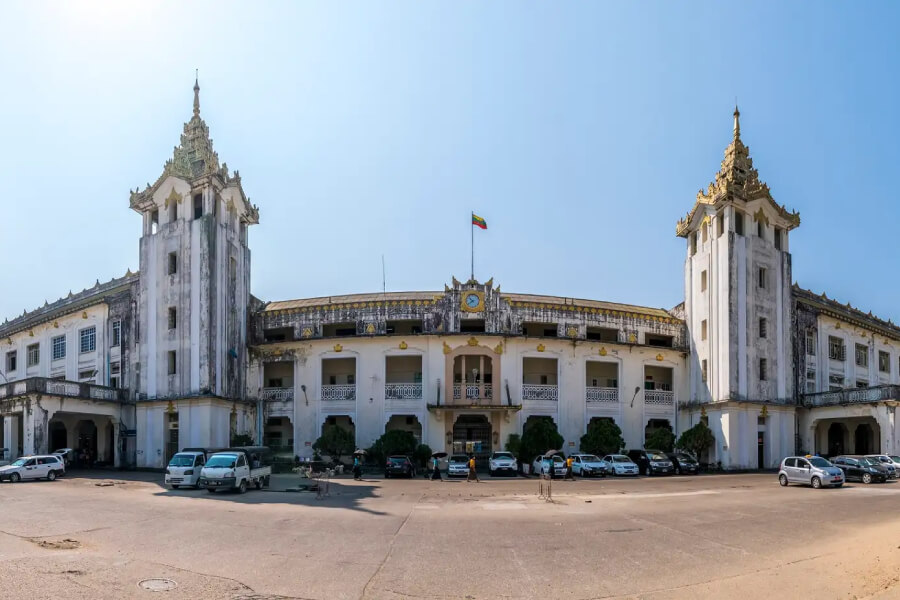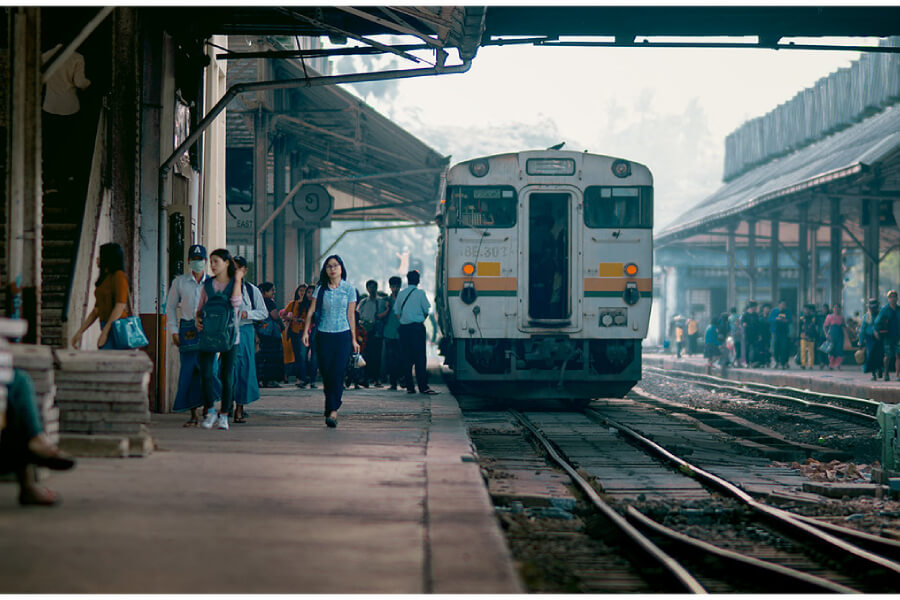Yangon Central Railway Station, often called the "Grand Old Lady of Yangon," is not just a transportation hub but a historic landmark. As you plan your visit on Myanmar tours, here are 5 must-know tips to make the most of your time there:
Tip #1: Embrace the History of Yangon Central Railway Station
Yangon Central Railway Station, often referred to as the "Grand Old Lady of Yangon." This iconic railway station is not just a transportation hub but a living testament to Myanmar's rich past. It was constructed in 1954 during the British colonial era and continues to retain much of its architectural charm. In this essay, we will take a closer look at the history, architectural beauty, and the enduring significance of Yangon Central Railway Station.
Historical Significance
Yangon Central Railway Station stands as a silent witness to the historical events that have shaped Myanmar's destiny. Constructed during British colonial rule, it played a vital role in facilitating the movement of goods and people across the country. Its strategic location at the heart of Yangon, Myanmar's largest city, made it a bustling center of activity.
During World War II, the station took on added importance as it was used as a critical supply hub for the Allied forces. It was also during this time that the station suffered significant damage due to air raids. After the war, it was painstakingly restored to its former glory, and today, it stands as a symbol of resilience and recovery.
Architectural Beauty
The architectural beauty of Yangon Central Railway Station is nothing short of breathtaking. The station's design is a fusion of Victorian and Burmese architectural elements, reflecting the colonial influence of the time. The grand façade, with its towering clock tower and intricate detailing, is a sight to behold. The station's wide corridors, high ceilings, and ornate pillars and arches all contribute to its grandeur.
As you enter the station, you can't help but feel like you've stepped back in time. The antique ticket counters, vintage signage, and the general ambiance all transport you to an era gone by. The architectural aesthetics capture the essence of a bygone time and remind visitors of the station's historical significance.
Tip #2: Know the Yangon Central Railway Station's Schedule
Why Knowing the Schedule Matters
Efficient Planning: By checking the train schedule in advance, you can efficiently plan your day. It allows you to allocate the right amount of time for traveling to the station, buying tickets, and getting settled on the platform.
Avoiding Last-Minute Rush: Train travel can be popular, especially during peak seasons or for specific routes. Knowing the schedule allows you to secure your tickets in advance, reducing the risk of last-minute inconveniences.
Connecting with Other Modes of Transportation: If you have connecting flights, buses, or other transportation plans, knowing the train schedule enables you to coordinate your itinerary effectively.
How to Check the Schedule
Official Railway Websites: The most reliable source for train schedules is the official Myanmar Railways website or other reputable rail service providers. These sites often offer up-to-date information, including departure and arrival times, ticket availability, and any potential delays.
Mobile Apps: There are mobile applications available that provide real-time train schedule updates, ticket booking, and additional travel information. Downloading a reputable rail app can be a convenient way to stay informed.
In-Person at the Station: While it's advisable to check schedules in advance, you can also visit the station in person to gather information from station staff or printed schedules.
Tips for Effective Trip Planning
Consider Peak Hours: Be mindful of peak travel hours, especially if you're traveling during holidays or special events. Trains may fill up quickly during these times.
Reserve Tickets Early: To secure your preferred departure time and class of travel, consider reserving your tickets as early as possible. Some routes may have limited availability, so booking in advance is a wise decision.
Allow for Flexibility: While it's crucial to know the schedule, allow for some flexibility in your plans. Trains may occasionally experience delays due to unforeseen circumstances, so being prepared for minor changes is advisable.
Tip #3: Explore the Surroundings Yangon Central Railway Station
Located in close proximity to renowned landmarks like Bogyoke Aung San Market and the Sule Pagoda, the station's surroundings offer a unique opportunity to immerse yourself in the authentic essence of Myanmar.
Bogyoke Aung San Market
Bogyoke Aung San Market, previously known as Scott Market, is a bustling marketplace located within a short walking distance from Yangon Central Railway Station. This market is a reflection of Myanmar's rich cultural heritage, and exploring it is not just a shopping experience but an opportunity to appreciate local craftsmanship.
At the market, you'll find an extensive array of traditional Burmese goods, including exquisite handicrafts, textiles, jewelry, and a wide variety of local cuisine. As you meander through the market's narrow alleys, you'll have the chance to interact with local artisans, learn about their craft, and perhaps even purchase a piece of Myanmar's heritage to take home.
Sule Pagoda
A short stroll from the railway station takes you to the Sule Pagoda, a revered religious site and historical landmark in Yangon. This golden stupa stands as a testament to Myanmar's spirituality and architectural prowess. The Sule Pagoda is distinctive for its unique octagonal shape, making it a captivating sight for visitors.
In addition to its architectural allure, the Sule Pagoda is a place of devotion and reflection for locals and a site of historical significance. The pagoda's location at the center of the city has made it a focal point for both spiritual gatherings and civic events, symbolizing the heart and soul of Yangon.
Tip #4: Enjoy Local Food in Yangon Central Railway Station
The station and its surroundings offer a delightful array of local flavors and street food that can't be missed. Here's why indulging in local cuisine is an essential part of your experience:
Explore Myanmar's Culinary Diversity
Myanmar's culinary culture is a fascinating blend of flavors, influenced by its neighboring countries, including China, India, and Thailand. The local food scene at and around Yangon Central Railway Station is a microcosm of this diverse and delicious fusion. From savory curries to mouthwatering noodles and delectable snacks, there's something to satisfy every palate.
Immerse Yourself in Local Life
The food vendors near the station are often run by local families who take pride in sharing their authentic dishes. Engaging with these vendors and savoring their creations is a way to connect with the heart and soul of Yangon. Don't be afraid to strike up conversations and learn about the stories behind the food.
Must-Try Local Delicacies
While at Yangon Central Railway Station, be sure to try some of these local delicacies:
Mohinga: Myanmar's national dish, a flavorful fish noodle soup infused with lemongrass, is a breakfast favorite and a must-try for its unique taste.
Shan Noodles: Shan-style noodles are widely loved for their combination of fresh ingredients and savory sauces.
Tea Leaf Salad: A fusion of fermented tea leaves, peanuts, and various crunchy additions makes for a distinctive and tasty treat.
Street Snacks: Don't forget to sample some street snacks like samosas, fried quail eggs, or crispy fritters that are both delicious and pocket-friendly.
Exploration Tips
Hygiene and Safety: Look for food vendors that follow good hygiene practices and have a reputation for safety. While street food can be delicious, it's essential to choose places that prioritize cleanliness.
Adventurous Eating: If you're an adventurous eater, don't hesitate to try unfamiliar dishes. Myanmar's cuisine has plenty of surprises for those willing to explore.
Local Beverages: Pair your meal with traditional local beverages like sweet tea, fresh fruit juices, or even a cup of the popular Myanmar beer.
Language of Food: You don't need to be fluent in Burmese to order food. Pointing, gestures, and a smile are often sufficient for communication.
Tip #5: Yangon Central Railway Station - Capture the Moment
For photography enthusiasts, Yangon Central Railway Station is not just a transportation hub; it's a treasure trove of visual delights waiting to be captured. From its exquisite architectural beauty to the bustling activity and the vibrant atmosphere, this station offers a prime opportunity to create captivating photographic memories. Here's why you shouldn't forget your camera or smartphone when visiting:
Architectural Splendor
Yangon Central Railway Station stands as a living architectural masterpiece that seamlessly blends Victorian and Burmese design elements. Its grand façade, crowned by a towering clock tower, boasts intricate detailing and ornate pillars. The station's wide corridors with high ceilings make for striking visuals. From wide-angle shots to detailed close-ups, the station offers a range of opportunities for architectural photography.
A Glimpse into History
As you explore the station, you'll encounter historical elements like antique ticket counters and vintage signage that transport you to a bygone era. These elements, combined with the station's timeless charm, provide a unique backdrop for capturing the essence of history through your lens.
Vibrant Atmosphere
Yangon Central Railway Station is a bustling hub where travelers, commuters, and vendors intermingle. The vibrant atmosphere, filled with the hum of activity, the calls of vendors, and the expressions of passengers, offers candid photography opportunities that tell the stories of everyday life in Yangon.
Exploration Tips for Photography Enthusiasts
Golden Hour Magic: For striking shots, consider visiting the station during the golden hours of early morning or late afternoon when the soft, warm light bathes the surroundings in a magical glow.
Composition: Experiment with composition techniques like leading lines, symmetry, and framing to create visually appealing photographs.
Candid Portraits: Capture the diverse faces and expressions of people at the station. Seek permission if necessary and engage with locals to capture authentic moments.
Details Matter: Don't overlook the small details that add character to the station. Close-up shots of architectural ornaments, signs, and textures can reveal hidden beauty.
Capture Motion: Use slower shutter speeds to capture the movement of people and trains, creating dynamic and energetic images.
Sharing Your Shots
Sharing your photographs of Yangon Central Railway Station with others not only allows you to relive your experiences but also promotes this iconic location to a wider audience. Consider sharing your photos on social media platforms or through photography websites to showcase the station's beauty to the world.
Whether you're a professional photographer or an amateur enthusiast, Yangon Central Railway Station is a canvas waiting for your creative expression. By capturing the architectural beauty, the dynamic atmosphere, and the history within its walls, you're not only documenting the station's legacy but also preserving your own memories of this captivating place.
So, don't forget your camera or smartphone when visiting Yangon Central Railway Station. It's a photographic journey waiting to unfold, where every frame tells a story and every click captures a piece of history and life in Yangon.

